Installation, Configuration and Support for Joomla Content Management System (CMS)
Joomla is an open source full featured Content Management System (CMS). The creation of new content and or editing of existing content can be done by users with administrative rights only. Their ability to make changes or add new content will depend on the rights conferred upon them by the Super Administrator of the system. In addition there is other group of users called registered users. Registered users can view pages that the general visitors cannot view. Thus it is possible to restrict access
to certain pages of the website to registered users only. At the time of creation of the page we can specify whether the page can be viewed by all visitors or registered users only. We can of course change these settings later, if required.
The different parts constituting the Joomla package are designed to be as modular as possible so as to facilitate the addition in functionality by means of components, modules and plugins. Specifically the Joomla extension
known as "component" allows webmasters to extend the features and perform various additional tasks such as adding an image gallery. Joomla can also be setup as an ecommerce site with a suitable extension. The e-commerce extension has gained in popularity that the developers of the extension have now come out with a Joomla version with the e-commerce component
integrated (built-in) into it. The Joomlastats extension can collect all the site statistics for you, if you are not satisfied with the built in statistics.
Besides this Joomla can also be made to appear like a Static site (HTML site) for all vistors by making the required settings in the control panel (Add Suffix to URL).
The look and feel of the site can be made to your exact liking just as you would have done in case of a simple static site (HTML based site) and were not using any content management system. This can be done by creating a customized template. You can also have more than one template for a site. This can be done by assigning the subsequent templates
to the page or pages where they should be used. There is also a full fledged search facility built into Joomla which the site visitor can use to search for
any content that they are looking for.
Finally one can also modify the source code of Joomla (Since Joomla is open source) or use an override
if one wants to make changes. If you do not want the site name to appear on each and every page title as is the default, it can be removed by selecting NO in the option Site Name in Page Titles.
Joomla generates very clean code, hence pages are generated relatively fast. This is very useful for visitors with slow internet connections. Joomla also provides full support for page titles, page description and keywords for each page in the site. With this feature it is possible to have separate titles, description as well as keywords for each page in the site. This facility is very useful for Search Engine Optimization.
Canonical urls can be added in Joomla version 4 and 5 by means of a free "Custom Canonical CK" component. This will enable you to use a custom canonical tag for each web page on your website. Once Joomla is installed and running, it is simple for even non-technical users to add or edit content, upload and add images, and to manage the content. Anybody with basic word processing skills can easily learn to manage a web site.
You will easily be able to create an unlimited amount of Sections, Categories, and Content Items on your web site via a simple, browser-based interface.
I provide web development services for Joomla Content Management System.
Features Of Joomla
Joomla Control Panel
Joomla has a full fledged control panel. You can add or edit any of the content items,
create new or make changes to existing menus, create new sections as well as categories. Besides this you can upload as well as manage media (pictures, videos etc) and make changes in the Global configuration of Joomla.
Below is the view of the control panel in Joomla 5 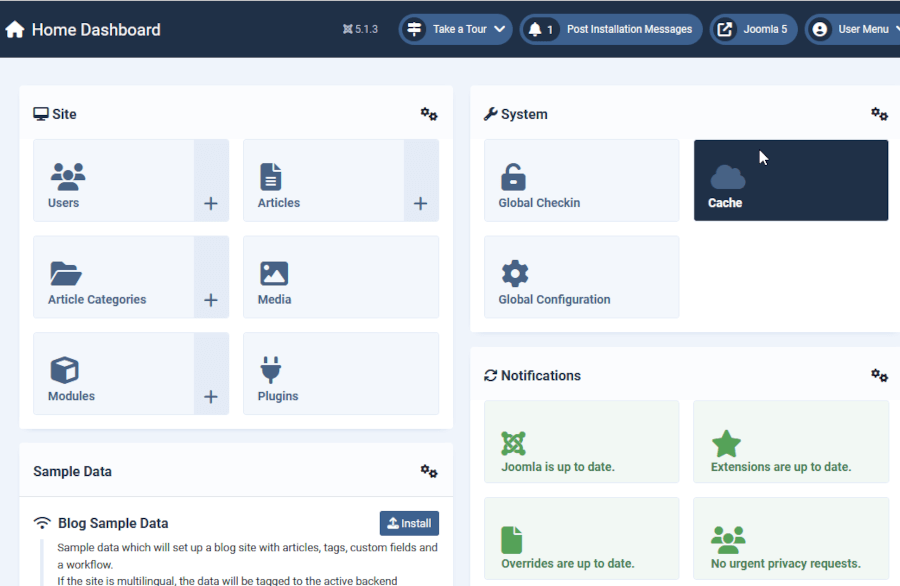
WYSIWYG Editor
Joomla has a WYSIWYG Editor which enables you to add as well as edit content, just as you would in any word processor.
This enables anyone who has basic computer knowledge to be trained to maintain a Joomla website. Joomla
also has the facility for adding a unique page title as well as a title alias (A shorter version of title, useful if SEF is turned on) for each page
as well as decription and keywords. besides the default editor, there exists an even better editor JCE, which is an award-winning, configurable WYSIWYG editor based on Moxiecode's TinyMCE. JCE also has another plugin for Joomla! called JCE Mediabox that creates 'Lightbox' style inline-popups.
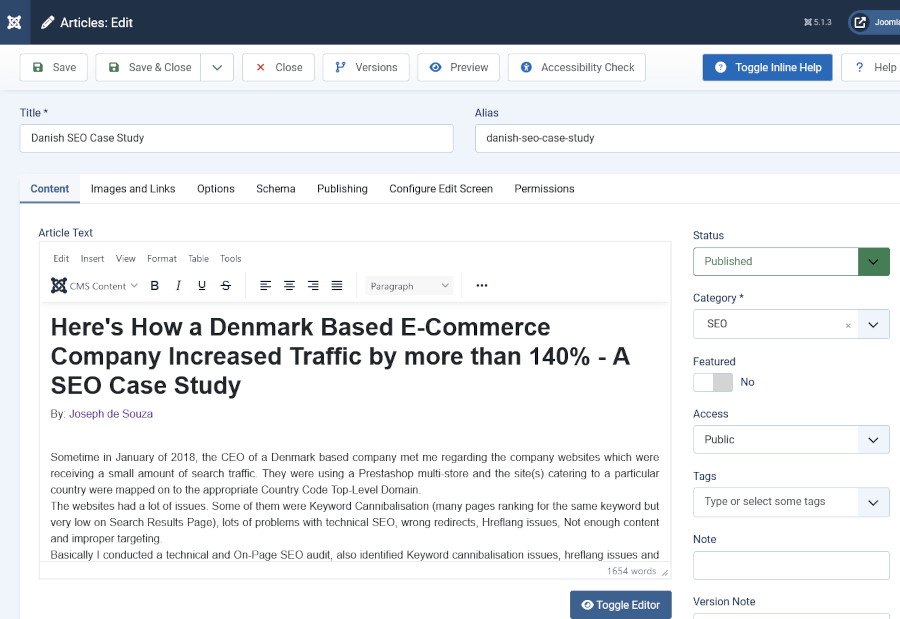
Adding the Meta tags
On the side of the WYSIWYG Editor Joomla has Various other publishing options. Under Options you can enter the browser page title. Under publishing it has a meta tag editor wherein you can enter the description meta tag as well as the keywords meta tag as shown in the screenshot below. You can get back to the editing tab by clicking the Content tab.
The canonical URL field appears as we have added the Custom Canonical CK extension. 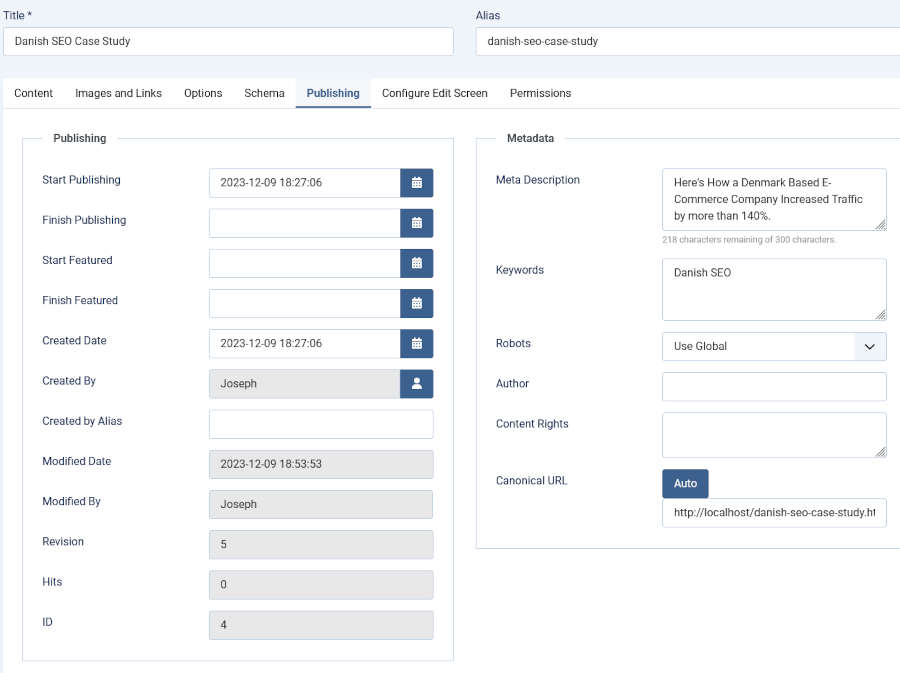
Creating a Link In The Appropriate Menu
Inorder to create a link in the appropriate menu for the site visitor to access this page, we have to go to the appropriate menu and add a menu item. We can also specify the browser page title here, although it is better that the page titles are set at the page level itself.
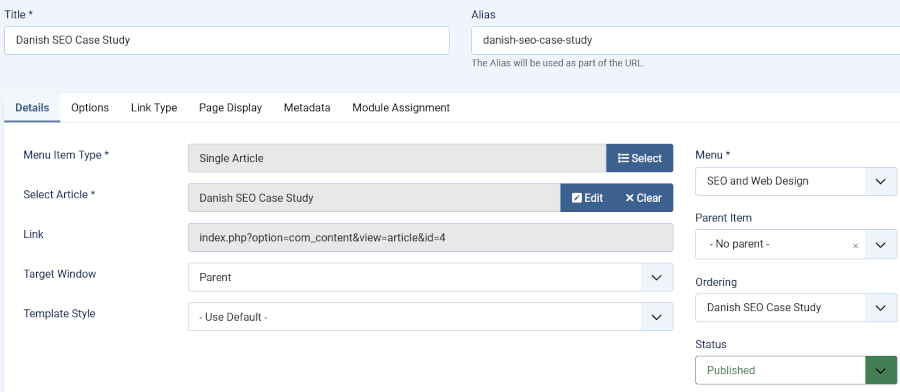
Customizing The Look And Feel By Using a Template
Joomla content management system can be fully customised to meet your requirement. A suitable customized theme can be created and used to make the look and feel of the site as per your requirement. A customised theme is normally created when we setup and customise Joomla at the time of installation.
However we can add more themes later on if desired. You can also have more than one theme for your site if required.
I have for demonstration purposes created a customised theme, menu as well as recreated a sample page of the earlier version of my site Infosolutions Goa in Joomla. There are also template frameworks available which give a large amount of flexibility to control the look and feel of your website.
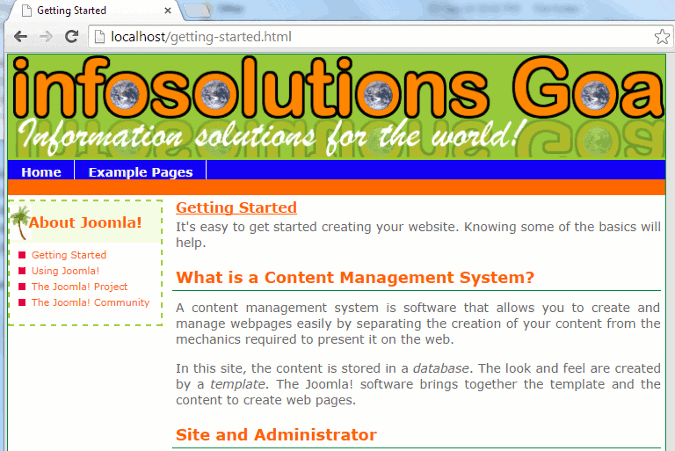
Updating a Joomla 5 Website
First of all make sure that all the installed extensions are updated. Once that is done, update the Joomla core.
Download the update from the Joomla website. Upload the Joomla update that you have downloaded.
After that you have to provide your Joomla username and password so that the update can proceed. Once this is done, the update will proceed and the progress will be displayed on the screen.
Finally you will get a message saying that your Joomla installation has been updated.
Here is a brief video to illustrate how to update Joomla 5.
About The Author
Joseph de Souza is a leading Freelance SEO consultant and Web developer in Goa, India with more than 17 years of experience in internet marketing.
He has a proven track record and has has helped several companies increase their traffic many times over and thereby increase their revenue and profits.
Besides English, Joseph has also successfully optimized two German language websites and a Danish language website and obtained outstanding results.
